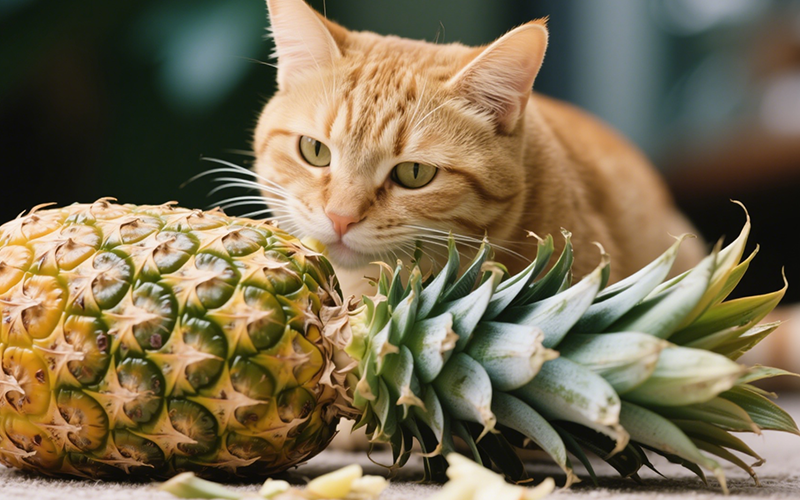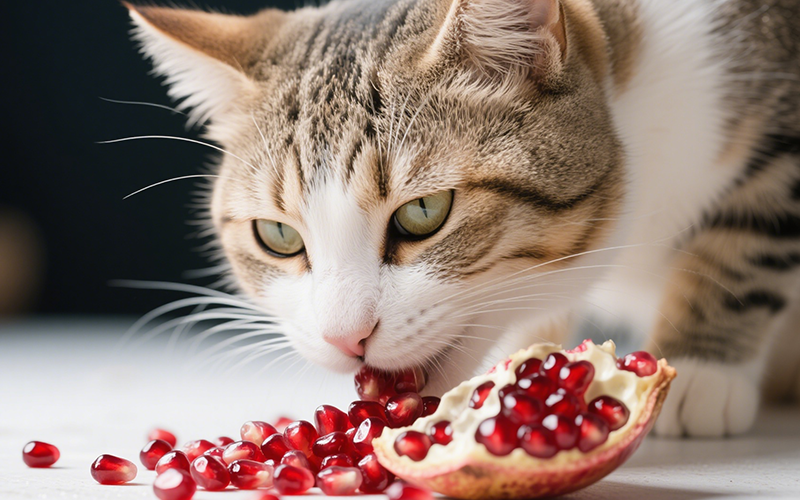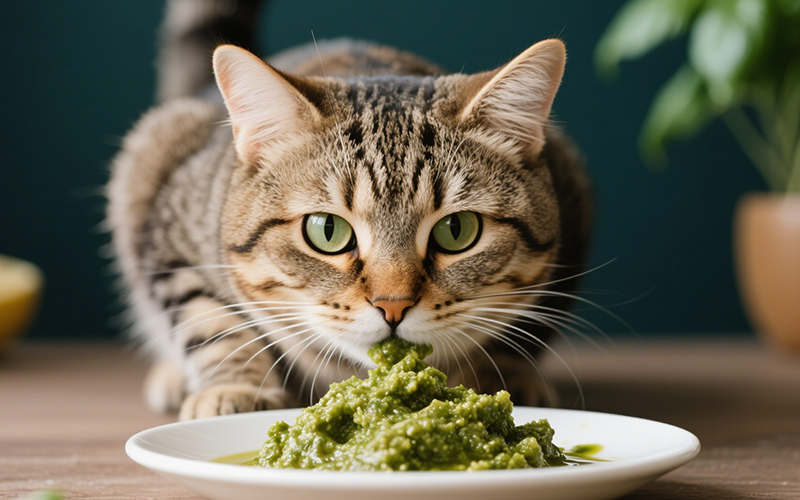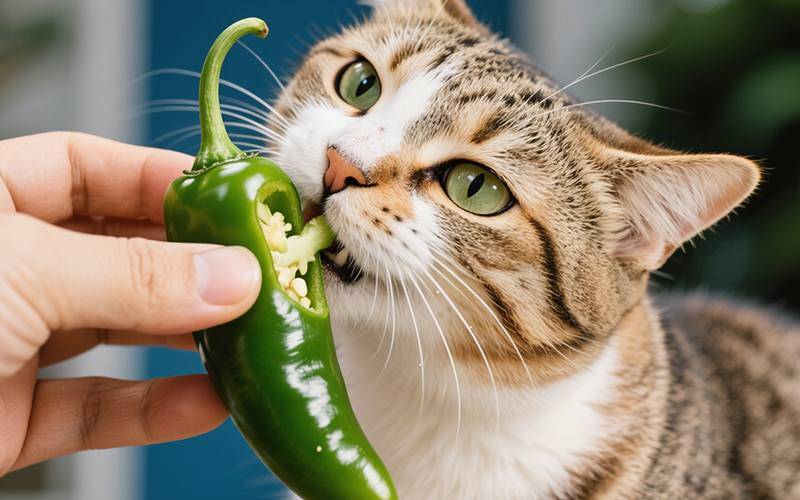Prickly Problem: Can Cats Eat Pineapple Leaves Safely? A Vet-Reviewed Risk Analysis
- 25 Apr 2025 09:27
Pineapple, with its tropical sweetness and tangy juice, is a favorite fruit for many. But the pineapple plant itself, particularly its tough, spiky leaves, often raises questions for cat owners. Cats are notorious for nibbling on houseplants out of curiosity or boredom, leading concerned pet parents to ask the crucial question: can cats eat pineapple leaves? While the pineapple fruit flesh (in tiny, plain amounts) might be relatively benign, the leaves pose significant physical hazards and contain compounds that can irritate a cat's system. This comprehensive guide, grounded in veterinary expertise and adhering to EEAT standards (Expertise, Authoritativeness, Trustworthiness), will explore the dangers of pineapple leaves for cats and explain why they should be kept strictly off-limits.

Understanding Pineapple Leaves: More Than Just Greenery
Pineapple leaves, also known as the pineapple crown or top, are the tough, waxy, sword-shaped leaves that grow from the top of the fruit. Their structure and composition are key to understanding the risks they pose to cats:
Tough and Fibrous: The leaves are incredibly fibrous and difficult to break down. This indigestibility is a major factor in the physical risks they present.
Sharp, Spiky Edges: Many pineapple varieties have leaves with sharp, serrated, or spiky edges designed to deter herbivores. These can cause physical injury.
Contain Bromelain: Like the fruit, pineapple leaves contain bromelain, a mixture of proteolytic enzymes (enzymes that break down protein). While bromelain has potential therapeutic uses, it can also be irritating to soft tissues, especially in concentrated forms or upon prolonged contact.
Indigestible Fiber: The sheer amount of tough, insoluble fiber is not something a cat's digestive system is designed to handle effectively.
Cats, being obligate carnivores, have digestive tracts optimized for processing meat, not tough, fibrous plant material like pineapple leaves.
Why Might a Cat Chew on Pineapple Leaves?
Despite the leaves being unappetizing and potentially hazardous, several feline behaviors might lead to chewing:
Curiosity: Exploring new textures, shapes, and smells in their environment, especially indoor plants.
Playfulness: The spiky texture or movement of the leaves might trigger a cat's predatory or play instincts.
Boredom/Lack of Enrichment: Cats without enough stimulation may resort to chewing on inappropriate items, including houseplants.
Texture Seeking: Some cats enjoy chewing on specific textures, and the toughness of the leaves might be appealing, however dangerous.
Pica: In some instances, persistently eating non-food items can indicate an underlying medical issue, nutritional deficiency, or behavioral disorder known as pica. If your cat frequently chews non-food items, consult your veterinarian.
Understanding these motivations can help owners implement preventative measures.
The Clear Dangers: Why Pineapple Leaves are Unsafe for Cats
Allowing a cat to chew on or ingest pineapple leaves poses several significant health risks:
1. Physical Injury and Irritation (Sharp Edges)
The most immediate danger comes from the physical nature of the leaves:
Oral Trauma:** The sharp, potentially serrated edges can easily cut or puncture a cat's delicate mouth tissues, gums, tongue, or throat, causing pain, bleeding, drooling, and difficulty eating.
Esophageal Damage:** If swallowed, sharp pieces can scratch or injure the esophagus on the way down.
Gastrointestinal Irritation:** Even if they don't cause cuts, the rough texture can physically irritate the lining of the stomach and intestines, leading to inflammation (gastritis/enteritis).
2. Severe Gastrointestinal Upset
The indigestible nature of the leaves almost guarantees digestive problems if ingested:
Vomiting:** The stomach's attempt to expel the irritating and indigestible foreign material often leads to vomiting.
Diarrhea:** Irritation extending to the intestines can cause diarrhea.
Abdominal Pain:** Inflammation and irritation are painful. Your cat might show sensitivity to touch, hunch over, or become lethargic.
Loss of Appetite:** Nausea and pain usually result in a decreased or complete loss of appetite.
3. Risk of Gastrointestinal Obstruction (Life-Threatening Emergency)
This is a critical and potentially fatal risk.
Blockage Formation:** Because the fibrous leaves are indigestible, they can accumulate in the stomach or, more dangerously, become lodged in the narrow intestines, causing a blockage.
Consequences of Obstruction:** An intestinal blockage prevents food, water, and gas from passing. It compromises blood flow to the intestinal wall, leading to tissue death (necrosis) and potential rupture (perforation). A perforation spills intestinal contents into the abdomen, causing severe infection (peritonitis).
Emergency Situation:** Both obstruction and perforation are **critical veterinary emergencies** requiring immediate diagnosis (often via X-rays or ultrasound) and usually emergency surgery. Delaying treatment significantly worsens the prognosis. Symptoms overlap with severe G.I. upset but are often more persistent and severe (repeated vomiting, extreme lethargy, severe pain, collapse). The risk of intestinal blockage is a primary reason vets advise against cats eating fibrous plant matter.
4. Potential Bromelain Irritation
While the concentration in leaves might be lower than in the core of the fruit, bromelain can still act as an irritant:
Mouth and Throat Irritation:** Chewing can release bromelain, potentially causing further irritation to already sensitive oral tissues.
Stomach Irritation:** Can contribute to gastritis and vomiting.
Although bromelain *toxicity* is unlikely from leaf ingestion alone, its irritant properties add to the overall problem.
5. Pesticide or Chemical Residues
Pineapples grown commercially may have been treated with pesticides or other agricultural chemicals. Residues on the leaves could be ingested by a chewing cat, potentially causing toxicity depending on the chemical used.
Are Pineapple Leaves Technically Toxic?
This is an important distinction. According to the ASPCA (American Society for the Prevention of Cruelty to Animals) database, the pineapple plant (*Ananas comosus*) is listed as **non-toxic** to cats. This means it doesn't contain specific poisonous compounds known to cause systemic poisoning (like lilies, oleander, or yew). However, **"non-toxic" does NOT mean "safe to eat."** The dangers of pineapple leaves lie primarily in their **physical hazards** (sharp edges, indigestibility leading to obstruction) and their potential to cause significant **gastrointestinal irritation**. Therefore, while not classified as poisonous, they are decidedly **unsafe** and should not be ingested by cats. This nuance is critical when answering "can cats eat pineapple leaves?". The lack of systemic toxins doesn't negate the severe physical risks.
What About Other Parts of the Pineapple?
* **Pineapple Fruit Flesh:** Small amounts of the soft, ripe fruit flesh (with skin and core removed) are generally considered safe for cats as an occasional treat. However, it's high in sugar and can cause digestive upset (diarrhea) if given in excess. It offers little nutritional value relevant to an obligate carnivore. * **Pineapple Skin & Core:** The tough, fibrous skin and the hard central core should not be given to cats due to indigestibility and choking/obstruction risks, similar to the leaves. The leaves remain the most hazardous part due to their sharpness combined with indigestibility.
Symptoms to Watch For If Ingestion Occurs
If you suspect your cat has chewed on or ingested pineapple leaves, be vigilant for these signs: * Drooling, excessive lip-licking * Pawing at the mouth, visible oral irritation or cuts * Vomiting (potentially containing leaf fragments) * Diarrhea * Lethargy, hiding * Loss of appetite * Signs of abdominal pain (discomfort when touched, hunching) * Straining or inability to defecate (potential obstruction sign) * Weakness or collapse (emergency sign)
Immediate Steps: What to Do If Your Cat Eats Pineapple Leaves
If you witness or suspect ingestion: 1. **Remove Your Cat & the Leaves:** Separate your cat from the plant immediately. Remove any visible leaf fragments from their mouth if safe to do so without getting bitten or pushing fragments further down. 2. **Assess the Situation:** Try to estimate how much was ingested and when. Note any immediate symptoms like gagging or oral discomfort. 3. **Contact Your Veterinarian or Emergency Pet Clinic IMMEDIATELY:** This is crucial due to the high risk of physical injury and potential obstruction. Do not adopt a "wait and see" approach, as obstructions can become critical quickly. * Clearly state: "My cat may have ingested pineapple leaves." * Provide details: Estimated amount, time, symptoms, cat's information. 4. **Follow Veterinary Instructions:** They will advise the best course of action, which might include: * Bringing the cat in immediately for examination. * Diagnostic imaging (X-rays/ultrasound) to check for ingested material or blockage. * Treatment for oral injuries or G.I. symptoms. * Hospitalization for observation or supportive care. * Emergency surgery if an obstruction is confirmed. 5. **Do NOT Induce Vomiting at Home:** Trying to make a cat vomit sharp, fibrous material can cause further damage to the esophagus and throat.
Pineapple Leaf Safety for Cats: Risk Summary Table
This table summarizes why pineapple leaves are unsafe:
| Risk Factor | Concern Level for Cats | Details & Recommendation |
| Physical Injury (Sharp Edges) | High Risk | Can cut mouth, throat, G.I. tract. Causes pain, irritation. Avoid. |
| Gastrointestinal Upset (Vomiting, Diarrhea) | High Risk | Caused by indigestible fiber, physical irritation, bromelain. Avoid. |
| Intestinal Obstruction | VERY HIGH RISK / EMERGENCY | Indigestible fibrous material can cause life-threatening blockage. **AVOID COMPLETELY.** Seek immediate vet care if suspected. |
| Bromelain Irritation | Low-Moderate Risk | Can contribute to oral and gastric irritation. Avoid. |
| Pesticide/Chemical Residues | Moderate Risk | Potential for toxicity from residues on leaves. Avoid. |
| Overall Answer to: Can cats eat pineapple leaves? | NO. Despite being listed as non-toxic by ASPCA, pineapple leaves are unsafe due to severe risks of physical injury, G.I. upset, and potentially fatal intestinal obstruction. Keep cats away from them. | |
Prevention: Keeping Cats Safe from Pineapple Plants
Since ingestion is dangerous, prevention is paramount: * **Keep Plants Out of Reach:** Place pineapple plants (or decorative tops) in areas completely inaccessible to your cat. This might mean a closed room, a high shelf they cannot jump to, or not having the plant indoors at all. * **Supervision:** If access cannot be entirely prevented, supervise your cat closely when they are near the plant. * **Provide Safe Alternatives:** Offer plenty of cat-safe plants (like cat grass, catnip, spider plants, certain ferns), scratching posts, chew toys, and interactive play sessions to satisfy their natural instincts and prevent boredom. * **Deterrents (Use Cautiously):** Some owners try bitter sprays on plant leaves, but these aren't always effective and must be pet-safe. Citrus peels placed around the plant base might deter some cats, as they generally dislike the smell.
Leveraging Pet Tech for Safety: PettureX App
Navigating potential household hazards for pets requires vigilance. Tools like the **PettureX** app can provide helpful information when concerns arise. PettureX features include:
24/7 AI Veterinary Consultation: Get immediate, general AI-powered answers to questions like "What plants are dangerous for cats?" or "What are the signs my cat ate something sharp?". This can help you understand risks while preparing to contact your vet. *AI information is general and does not replace professional veterinary care.*
Image Recognition for Pet Health:** Useful for identifying visual issues (e.g., mouth irritation) to show your vet.
Animal Species Identification:** Can help identify houseplants you're unsure about.
PettureX serves as a modern resource, providing accessible knowledge to support responsible pet care alongside your veterinarian.
Safe Greens and Chews for Your Feline Friend
Instead of letting your cat risk injury with pineapple leaves, offer these safe alternatives: * **Cat Grass:** Commercially available oat, wheat, rye, or barley grass provides safe, digestible fiber and satisfies the urge to chew greens. * **Catnip:** Dried or fresh catnip (for cats that respond). * **Silver Vine Sticks:** Natural wood sticks many cats enjoy chewing. * **Cat-Safe Houseplants:** Research and choose plants specifically known to be non-toxic and safe for cats (e.g., spider plant, Boston fern, prayer plant). ASPCA provides extensive lists. * **Dental Chew Toys:** Toys designed to be safely chewed, promoting dental health.
Conclusion: Pineapple Leaves - Admire, Don't Allow Nibbling
In conclusion, the definitive answer to "can cats eat pineapple leaves?" is a strong **no**. While not containing potent systemic toxins, their sharp edges, indigestible fibrous nature, and potential irritants like bromelain make them hazardous. The risks of painful oral and gastrointestinal injuries, severe digestive upset, and life-threatening intestinal obstruction far outweigh any feline curiosity. Protect your cat by ensuring pineapple leaves are kept completely out of reach. Focus on providing safe, appropriate outlets for their chewing and exploratory behaviors, such as cat grass or cat-safe toys. If you suspect your cat has ingested pineapple leaves, contact your veterinarian immediately as it constitutes a potential emergency. Vigilance and prevention are key to keeping your feline companion safe from the prickly dangers of pineapple leaves.
Related

Pomegranate Peril: Can Cats Eat the Seeds Safely? A Vet-Reviewed Guide
- 25 Apr 2025
The Prickly Truth: Can Cats Eat Pine Needles Safely? A Guide for Concerned Owners
- 24 Apr 2025
Pesto & Paws: A Dangerous Mix? Can Cats Eat Pesto Safely?
- 24 Apr 2025
Persimmons and Paws: Can Cats Safely Eat This Autumn Fruit? A Vet-Reviewed Guide
- 23 Apr 2025
Nutritional Yeast for Cats: Savory Sprinkle or Health Hazard? A Vet-Reviewed Guide
- 23 Apr 2025
Marshmallows and Cats: A Puffy Problem? Why Vets Say No to This Sugary Snack
- 22 Apr 2025
Kefir for Kitties? A Veterinarian-Reviewed Guide to Safety, Benefits & Risks
- 22 Apr 2025
The Burning Question: Can Cats Eat Jalapenos? A Comprehensive Safety Guide
- 21 Apr 2025
Cool Temptation: Can Cats Eat Ice Cream Safely? The Vet-Backed Truth
- 21 Apr 2025
Frankly Dangerous: Can Cats Eat Hot Dogs? Vet Explains the Serious Risks
- 16 Apr 2025
